15 Ng. 100 Đ. Nguyễn Xiển, Thanh Xuân Nam, Thanh Xuân, Hà Nội 100000
Nestled at the foot of Mount Phou Kao in southern Laos, the ancient ruins of Wat Phou stand as a breathtaking testament to a civilization that flourished millennia ago. More than just a collection of crumbling stones, Wat Phou is a profound spiritual site, a UNESCO World Heritage marvel, and a journey back in time. For those seeking a blend of history, spirituality, and unparalleled natural beauty, Wat Phou offers an experience that resonates long after you've left its hallowed grounds.
Wat Phou, meaning "mountain-temple," is much more than an archaeological site; it's a living, breathing connection to the Funan and Khmer empires that shaped Southeast Asia. Predating the grandeur of Angkor Wat, Wat Phou represents an earlier and equally significant chapter in the region's history, showcasing intricate Hindu architecture and a profound spiritual landscape. Its unique setting, with the temple complex perfectly aligned with the sacred mountain, creates an atmosphere of deep reverence and awe.
For centuries, pilgrims have journeyed to Wat Phou, drawn by its mystique and the powerful energy it emanates. Today, it continues to captivate visitors with its harmonious blend of art, architecture, and spirituality, offering a unique glimpse into the rich cultural tapestry of Laos.
The history of Wat Phou is a fascinating chronicle, stretching back to the 5th century CE. Initially a Hindu temple dedicated to Shiva, it underwent significant transformations over the centuries, eventually becoming a Buddhist monastery in the 13th century.
The earliest structures at Wat Phou date back to the Funan Kingdom, making it one of the oldest archaeological sites in Southeast Asia. The mountain itself was revered as a sacred abode of the gods, and early temples were built to honor them. Later, the Chenla Kingdom expanded upon these foundations, establishing a significant religious center. The alignment of the temple with the natural spring on the mountain, believed to be a sacred lingam, highlights the deep spiritual connection the early inhabitants had with their environment.
It was during the Khmer Empire's zenith that Wat Phou truly flourished. Successive Khmer kings, including the revered Suryavarman II (builder of Angkor Wat), contributed to its expansion and embellishment. The impressive lower and upper temple complexes, the grand processional walkway, and the intricate carvings that adorn the ruins are largely products of this period. Wat Phou served as a crucial outpost and spiritual center for the Khmer Empire, demonstrating their widespread influence and architectural prowess. The site's hydraulic engineering, with reservoirs and canals, is another testament to the advanced capabilities of the Khmer civilization.
As Theravada Buddhism gained prominence in the region, Wat Phou gradually transitioned from a Hindu sanctuary to a Buddhist monastery. Many of the Hindu deities were replaced with Buddha images, and new stupas and shrines were added. This transformation reflects the evolving religious landscape of Southeast Asia and the ability of Wat Phou to adapt and remain a vital spiritual center for centuries.
Despite centuries of neglect and the ravages of time, efforts to preserve and restore Wat Phou began in earnest in the late 20th century. Its immense historical and cultural significance was officially recognized in 2001 when it was inscribed as a UNESCO World Heritage site. This designation brought international attention and resources, ensuring the continued protection and study of this extraordinary archaeological treasure.
The layout of Wat Phou is designed to guide pilgrims on a symbolic ascent, both physically and spiritually, towards the sacred mountain. The complex spans several terraces, each offering a unique perspective and architectural marvel.
Your journey begins at the two vast barays (reservoirs) that flank the main axis of the complex. These ancient reservoirs not only served practical purposes for water management but also held symbolic significance, representing the cosmic oceans. From here, a long, processional walkway, flanked by towering frangipani trees, leads you towards the main temple. This grand approach immediately evokes a sense of anticipation and reverence.
At the end of the walkway, you encounter the impressive remains of two large pavilions, one on each side of the main axis. These structures, likely used for ritual ceremonies or as resting places for pilgrims, showcase exquisite Khmer architectural details, including intricate carvings of devatas and apsaras. Just beyond these pavilions, a stone naga bridge, symbolizing the connection between the human and divine realms, ushers you towards the upper complex. The detailed carvings on these structures are a preview of the artistic mastery you'll witness further up.
Ascending a series of steps, you reach the middle terrace, which houses smaller shrines and a library building. While less grand than the main sanctuary, these structures offer fascinating insights into the daily life and religious practices of the temple's inhabitants. Look closely for remnants of bas-reliefs and lintels that depict scenes from Hindu mythology.
The most awe-inspiring part of Wat Phou is the upper sanctuary, perched dramatically on the hillside. Reaching it requires a climb up a steep, ancient stone staircase, a challenge that adds to the spiritual significance of the ascent. At the top, you are rewarded with the main prasat (tower sanctuary), dedicated to Shiva. Although largely in ruins, the intricate carvings on its remaining walls are still breathtaking.
Behind the main prasat lies the sacred spring, emerging directly from the mountain. This natural spring was revered as a manifestation of the lingam, a symbol of Shiva's creative energy. Pilgrims traditionally collect water from this spring, believing it to possess healing and purifying properties. The serene atmosphere and panoramic views from this vantage point are truly unforgettable.
Adding to the mystique of Wat Phou are the "Elephant Stone" and "Crocodile Stone," natural rock formations that have been shaped by erosion and given mythical significance. These formations are often associated with ancient rituals and add another layer of intrigue to the site. The Crocodile Stone, in particular, is believed to have been used for human sacrifices in ancient times, though this remains a subject of historical debate.
Wat Phou is more than just an archaeological site; it's a place of profound spiritual and cultural importance. Its enduring legacy lies not only in its architectural grandeur but also in its deep connection to the spiritual beliefs and practices of the region.
Even today, Wat Phou remains an active place of worship. Local people and pilgrims from across Laos and beyond visit the site to pay homage, particularly during the annual Wat Phou Festival. This vibrant festival, held during the full moon of the third lunar month (usually February), brings the site to life with religious ceremonies, traditional performances, and a bustling market. Experiencing Wat Phou during this time offers a unique insight into the living traditions of Laos.
One of the most striking aspects of Wat Phou is its seamless integration with the natural landscape. The architects meticulously designed the complex to align with the sacred mountain, incorporating natural features like the spring and the rock formations into the spiritual narrative. This harmonious relationship between human creation and the natural world is a hallmark of ancient Khmer design and a powerful reminder of humanity's connection to the environment.
The iconography and layout of Wat Phou offer a window into the ancient Hindu and Buddhist cosmologies that shaped Southeast Asian civilizations. The symbolism embedded in its architecture, from the naga bridges representing earthly and celestial connections to the mountain itself symbolizing Mount Meru (the mythical center of the universe), provides a rich tapestry of meaning for those willing to explore it.
Visiting Wat Phou is an experience that requires some planning to maximize your enjoyment and appreciate its full grandeur.
The dry season (October to April) is generally the best time to visit Wat Phou, with cooler temperatures and less humidity. However, be aware that March and April can be quite hot. If you visit during the Wat Phou Festival (usually February), you'll experience a unique cultural immersion, but expect larger crowds.
Wat Phou is located approximately 40 kilometers south of Pakse, the largest city in southern Laos.
By Tuk-Tuk or Motorbike: You can easily hire a tuk-tuk from Pakse for a half-day or full-day trip. Motorbike rentals are also available for independent travelers.
By Boat: A more scenic option is to take a boat trip down the Mekong River. Many tours include a boat journey, offering stunning views of the surrounding landscape.
Organized Tours: The most convenient way to visit Wat Phou, especially if you prefer a guided experience and hassle-free transportation, is to book an organized tour. Golden Trail Travel offers expertly crafted tours to Wat Phou, ensuring a smooth and enriching journey. Visit their website at https://goldentrailtravel.com/ to explore their tour options.
Comfortable Walking Shoes: You'll be doing a fair amount of walking and climbing steps, so comfortable footwear is essential.
Sun Protection: A hat, sunglasses, and sunscreen are highly recommended, especially during the dry season.
Water: Stay hydrated, as there are limited facilities on site.
Camera: The photographic opportunities at Wat Phou are endless, from the grand vistas to the intricate carvings.
Modest Clothing: As a religious site, it's respectful to dress modestly, covering your shoulders and knees.
Insect Repellent: Especially during the wet season or if you visit early mornings/late afternoons.
Allocate Enough Time: To truly appreciate Wat Phou, allow at least 2-3 hours to explore the complex at a leisurely pace. If you're particularly interested in history and archaeology, you might want to spend even longer.
Hire a Local Guide: While you can explore on your own, hiring a local guide can significantly enhance your understanding of the history, symbolism, and cultural significance of the site. They can bring the ruins to life with their insights and stories. Golden Trail Travel tours often include knowledgeable local guides.
Respect the Site: Remember that Wat Phou is an active religious site. Be respectful of local customs, avoid climbing on fragile structures, and dispose of your waste properly.
While Angkor Wat in Cambodia often takes the spotlight, Wat Phou offers a unique and equally compelling experience. Understanding their differences can help you appreciate each site's distinct charm.
Wat Phou predates much of Angkor Wat's grandeur, with its origins tracing back to the 5th century. While Angkor Wat is an immense complex spanning hundreds of square kilometers, Wat Phou is a more compact and intimate site. Its smaller scale allows for a more focused and less overwhelming exploration.
Both sites showcase remarkable Khmer architecture, but Wat Phou's structures represent earlier architectural styles, providing insights into the evolution of Khmer art and building techniques. You can observe the transition from Hindu to Buddhist influences more distinctly at Wat Phou.
Angkor Wat, especially its main temples, can be incredibly crowded. Wat Phou, while gaining popularity, generally offers a more serene and contemplative atmosphere. You're more likely to find moments of quiet reflection and feel a stronger connection to the ancient past without the throngs of tourists.
Wat Phou's unique setting at the base of a sacred mountain, with its natural spring, creates a distinct spiritual landscape that differentiates it from the vast, flat plains surrounding Angkor Wat. The interplay between the man-made structures and the natural environment is a defining characteristic of Wat Phou.
Ultimately, both Wat Phou and Angkor Wat are invaluable historical and spiritual treasures. Visiting Wat Phou offers a chance to delve deeper into the origins of Khmer civilization and experience a UNESCO site in a more intimate setting, making it a perfect complement to any Southeast Asian itinerary.
Embarking on a journey to Wat Phou with Golden Trail Travel ensures a seamless, insightful, and memorable experience. As specialists in creating exceptional travel itineraries throughout Southeast Asia, Golden Trail Travel offers a range of options designed to cater to every traveler's needs.
Expertly Curated Itineraries: From comfortable transportation to knowledgeable local guides, Golden Trail Travel meticulously plans every detail of your Wat Phou adventure.
Cultural Immersion: Their tours are designed not just to show you the sights but to immerse you in the local culture, history, and traditions of Laos.
Convenience and Comfort: Forget the hassle of logistics. Golden Trail Travel handles everything, allowing you to relax and fully enjoy your journey.
Support Local Communities: By choosing Golden Trail Travel, you contribute to responsible tourism practices that benefit local economies and preserve cultural heritage.
Seamless Booking: Visit their user-friendly website at https://goldentrailtravel.com/ to easily browse tour options, customize your trip, and book your Wat Phou adventure today.
Whether you're looking for a short day trip from Pakse or a more extensive itinerary that includes other gems of Southern Laos, Golden Trail Travel has the perfect solution. Let them guide you on an unforgettable exploration of Wat Phou and the wonders of Laos.
Q1: What is Wat Phou and where is it located? A1: Wat Phou is an ancient Khmer Hindu temple complex in southern Laos, dating back to the 5th century. It's located at the base of Mount Phou Kao, approximately 40 kilometers south of Pakse in Champasak Province. It is a UNESCO World Heritage site.
Q2: What is the significance of Wat Phou? A2: Wat Phou is significant for its historical and architectural value as one of the oldest and most important Khmer temple complexes, predating Angkor Wat. It served as a vital spiritual center for both Hindu and later Buddhist faiths, embodying unique architectural design harmonized with its natural sacred mountain setting.
Q3: Is Wat Phou a Hindu or Buddhist temple? A3: Initially, Wat Phou was a Hindu temple dedicated to Shiva. Over the centuries, particularly from the 13th century onwards, it transitioned into a Theravada Buddhist monastery, with many Hindu elements being reinterpreted or replaced with Buddhist iconography. It remains an active Buddhist worship site today.
Q4: How long does it take to explore Wat Phou? A4: To fully appreciate the site, including the lower and upper complexes and the climb to the sacred spring, allow at least 2 to 3 hours. If you're particularly interested in history or photography, you might want to spend more time.
Q5: What is the best way to get to Wat Phou from Pakse? A5: You can get to Wat Phou from Pakse by hiring a tuk-tuk, renting a motorbike, or taking an organized tour. Organized tours, like those offered by Golden Trail Travel, are often the most convenient and provide guided insights. Some tours also include a boat trip on the Mekong.
Q6: Are there entrance fees for Wat Phou? A6: Yes, there is an entrance fee to Wat Phou. The fee contributes to the preservation and maintenance of the site.
Q7: What should I wear when visiting Wat Phou? A7: As Wat Phou is a religious site, it's respectful to dress modestly. This means covering your shoulders and knees. Comfortable walking shoes are also highly recommended due to the uneven terrain and steps.
Q8: Is there food and drink available at Wat Phou? A8: There are usually local vendors selling drinks and snacks near the entrance. However, it's advisable to bring your own water, especially for the climb to the upper sanctuary. Full meal options are limited on-site.
Q9: Can I visit Wat Phou during the rainy season? A9: Yes, you can visit during the rainy season (May to October), but expect higher humidity and occasional downpours. The landscape will be lush and green, but some paths might be slippery. The dry season (October to April) is generally preferred for more comfortable weather.
Q10: What is the Wat Phou Festival? A10: The Wat Phou Festival is an annual Buddhist festival held during the full moon of the third lunar month (usually February). It's a vibrant event with religious ceremonies, traditional performances, and a bustling market, attracting pilgrims and visitors from across the region.
"Our trip to Wat Phou with Golden Trail Travel was simply magnificent. Our guide was incredibly knowledgeable, bringing the ancient ruins to life with captivating stories and historical facts. The transportation was comfortable, and everything was perfectly organized. Highly recommend them for anyone visiting Laos!" — Sarah L., United Kingdom
"Wat Phou is an absolute hidden gem, and Golden Trail Travel made our visit effortless. The boat trip there was a beautiful start to the day, and our guide's insights into the temple's history and spiritual significance were invaluable. A truly memorable experience!" — Kenji T., Japan
"We booked a private tour to Wat Phou through Golden Trail Travel, and it exceeded all our expectations. The flexibility in the itinerary, the personalized attention from our guide, and the seamless logistics allowed us to truly immerse ourselves in the beauty and history of the site. Fantastic service!" — Maria P. & David R., Australia
"I'm so glad I chose Golden Trail Travel for my Wat Phou adventure. The climb to the top was worth every step, and the views were incredible. Their local guide was passionate and made the history so engaging. Plus, booking online was super easy. A must-do when in Southern Laos!" — Alex C., Canada
"From the moment we inquired to the end of our tour, Golden Trail Travel provided exceptional service. Wat Phou itself is awe-inspiring, and having an expert guide explain its intricate details made it even more special. It's clear they care deeply about their clients' experience and sustainable tourism." — Lena S., Germany
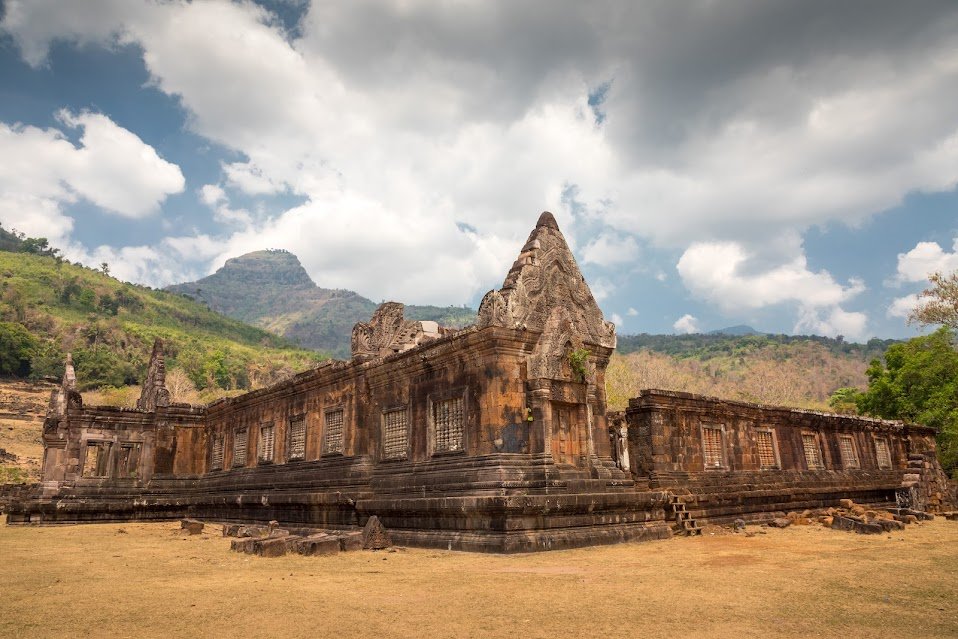
.jpg)
Bac Ninh cycling lets you experience the beautiful Vietnamese countryside in the northern Vietnam. Pedaling on the back roads, through rural village lanes while greeting local farmers and school kids as you pass by, all add to an immersive experience!
May 28, 2025
.jpg)
Electric bikes, or e-bikes use rechargeable batteries to assist cyclists with a small electric motor. E-bikes are particularly suitable for holidays, as they allow people who do not share the same level of fitness to enjoy cycling activities together. Cycling in Vietnam with our electric bicycles is a truly amazing experience — They help cyclists ride longer distances per day trip, and navigate routes with uphill sections more easily. This makes a wider range of destinations accessible to a wider range of cyclists, including senior cycling tourists. Wandering through rural villages, eating delicious food, and enjoying this country’s great landscape. From long-distance treks to shorter rides and sightseeing, there is a route for everyone!
May 28, 2025
.jpg)
We have a wide range of kids bikes for our bike tours in Hanoi Vietnam. Our small bicycles are used for both boys and girls. There is no difference between boy bikes and girl bikes. The bike frame is the same – Children’s bikes are sized by wheel rather than frame because it’s the wheels that determine the proportions of the rest of the bike. Make sure your child can operate the brake and gear levels comfortably, and that the pedals are positioned for safe stopping.
May 28, 2025
.jpg)
A single speed bicycles or a fixed gear bike is a type of bicycle with a single gear ratio. These bicycles are without derailleur gears, hub gearing or other methods for varying the gear ratio of the bicycle. There are many types of single speed bicycles such as single speed bikes for children, cruiser type bicycles, classic commuter bicycles, unicycles, bicycles designed for track racing, fixed-gear road bicycles, and single-speed mountain bikes.
May 28, 2025
.jpg)
Mountain bikes are designed to be ridden over rugged terrain and technical trails with logs, rocks, roots and other obstacles. They have a sharp frame geometry that puts the rider in a commanding position to pedal and climb efficiently. They have lower gear ratios that allow riders to pedal through steep and difficult terrain. Because of their intended use, mountain bikes are sturdy and overbuilt to handle the abuse of the trails. They usually have larger, heavily knobbed tires and strong brakes like hydraulic disc brakes. Many mountain bikes feature a kind of suspension shock over the front tire or both front and rear, allowing the frame to comply with the bumps, jumps and challenges of the trail.
May 28, 2025
.jpg)
Giant are the world’s leading brand for quality and safety in bikes. Giant Anyroad bicycles are designed with a lightweight yet durable ALUXX alloy frame featuring a taller headtube and increased toptube stand-over distance for confident handling.
May 28, 2025
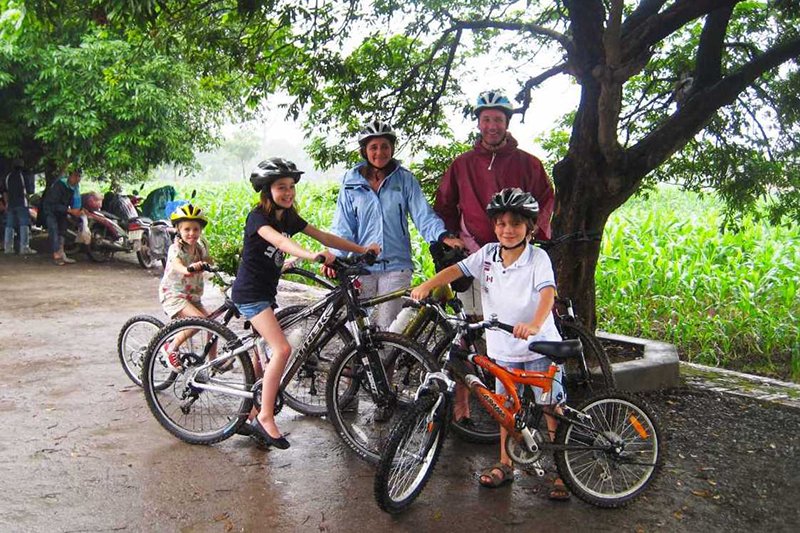
Hanoi Cycling lets you experience the beautiful countryside of the Vietnam’s capital, as well as rural Hanoi village life from up close. Pedaling on the back roads, through countryside lanes while greeting local farmers and school kids as you pass by, all add to an immersive experience!
May 28, 2025
.jpg)
Hybrid bicycles are a combination of a road bike and a mountain bike. Hybrid bikes feature relaxed frame geometry and raised handlebars, meaning that you sit up straigh
May 28, 2025
.jpg)
At the inaugural night tour of Cuc Phuong National Park in northern Vietnam on Saturday, close to a hundred visitors took part in a variety of activities.
A park spokesman said that most visitors were excited to take part in the trip.
May 28, 2025
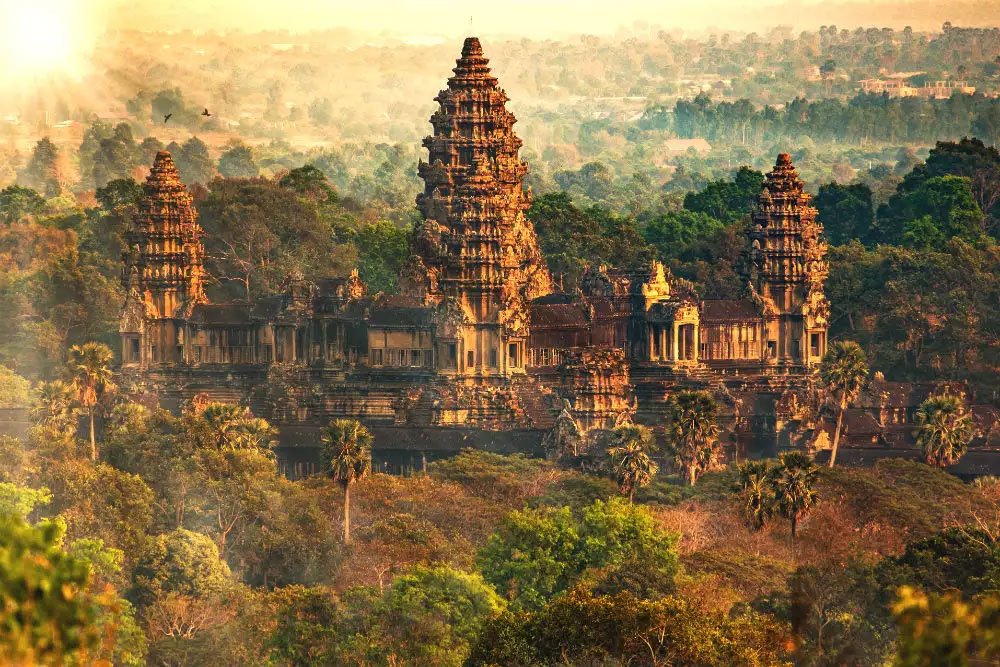
In Cambodia, the climate is tropical, and stays warm all year long. It is governed by the monsoon winds, so that this country has two main seasons in a year.
May 28, 2025
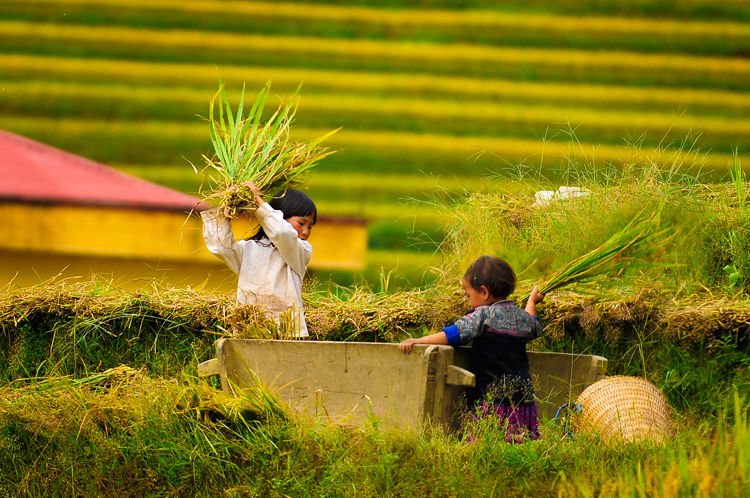
Mu Cang Chai is a highland district of Yen Bai province, about 280km from Hanoi. Each season, this place receives thousand domestic and international tourists. The district lies at the foot of the Hoang Lien Mountains, at an altitude of 1,000 m above sea level. To reach Mu Cang Chai district, go through Khau Pha pass - one of the four Great Passes of the Northwest.
May 28, 2025

People said that “If one has not visited floating market, he has not visited the south-west of Vietnam”. Literally, floating markets which have been around for a long time make the liveliest part of life in the south-west, the land of rivers, canals and ditches.
May 28, 2025

If you are in Vietnam on September 2, you will feel the extraordinary daily life of Vietnamese people. So what activities are recommended on this day?
May 28, 2025
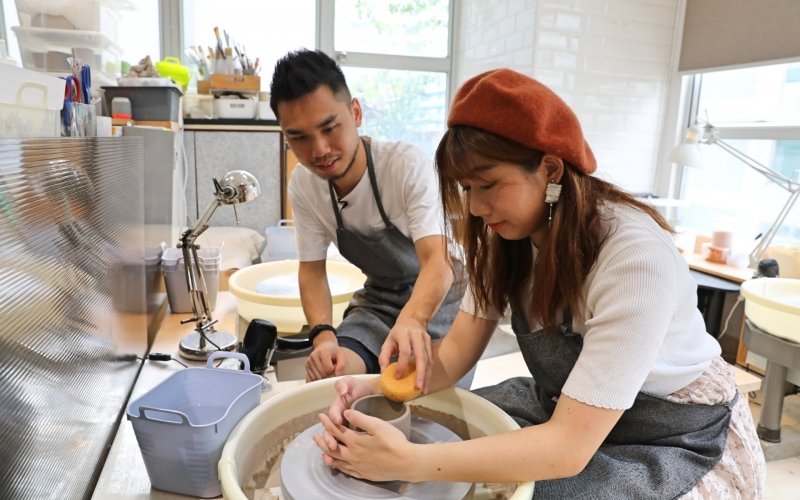
Pottery class Bat Trang is one of activity with unique experience which help people to reduce stress and improve the creativity.
May 28, 2025

Prime Minister Prayut Chan-o-cha says Thailand will open the country to visitors from 46 countries instead of only 10 Covid-19 low-ríkyy countries announced earlier, starting from Nov 1.
May 28, 2025